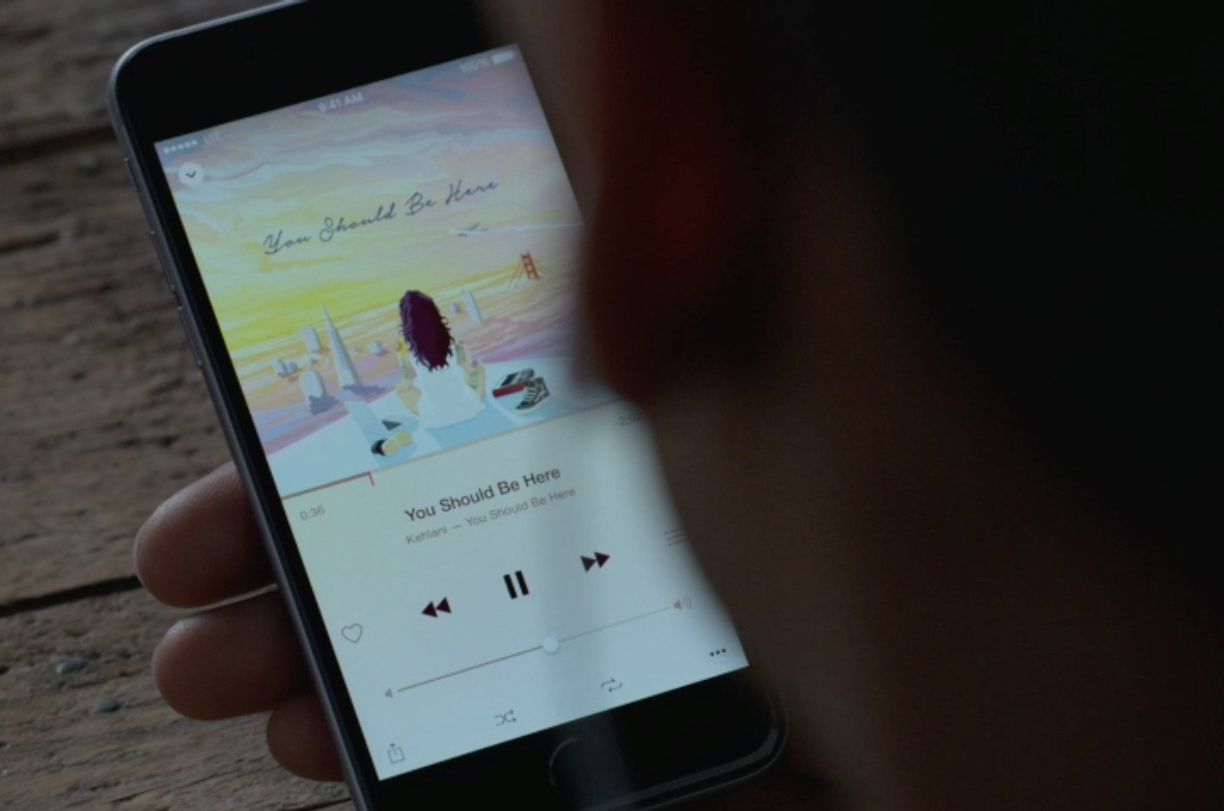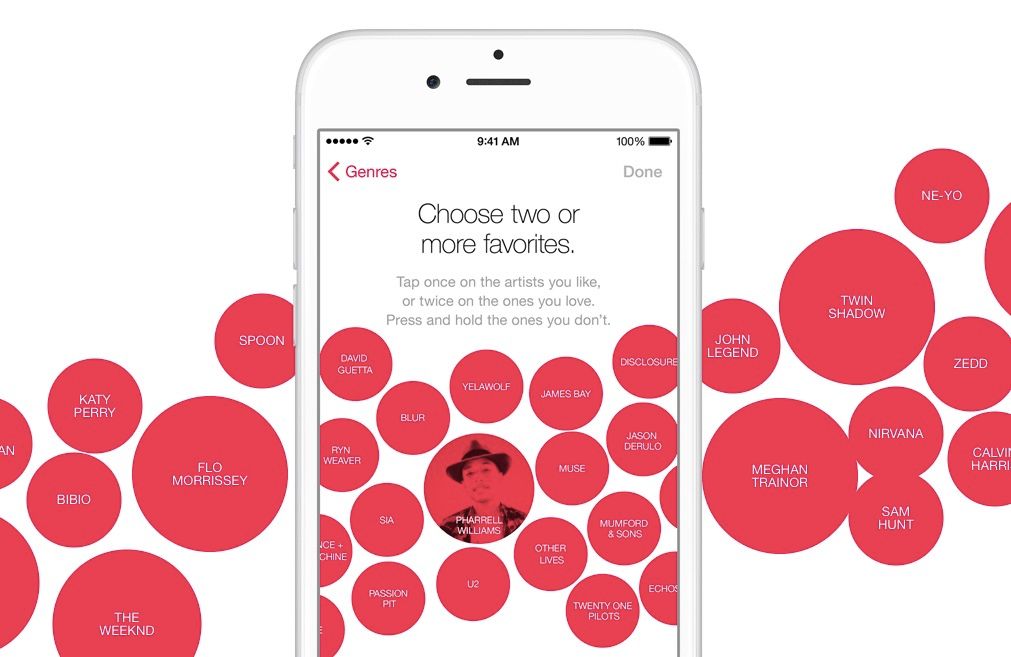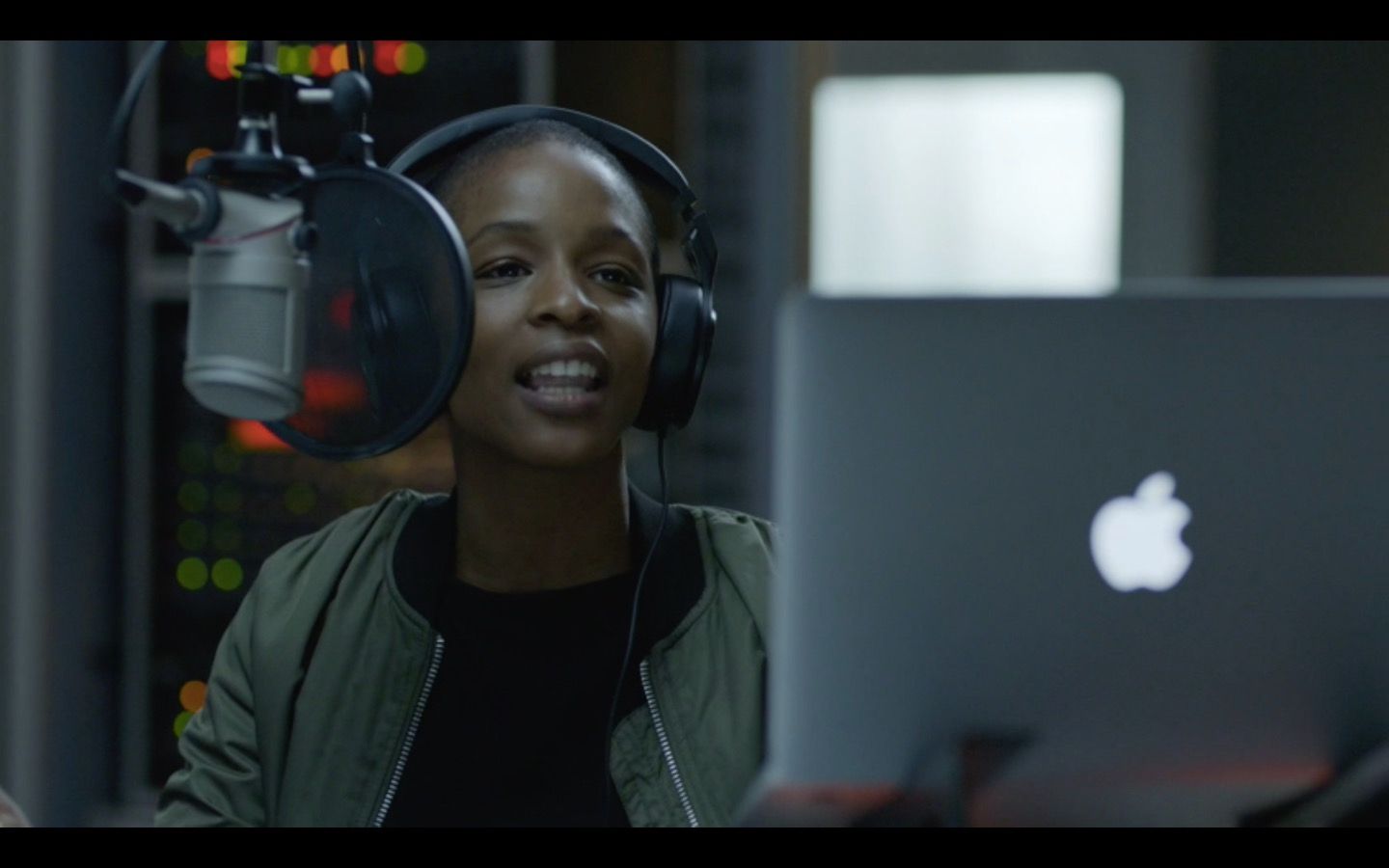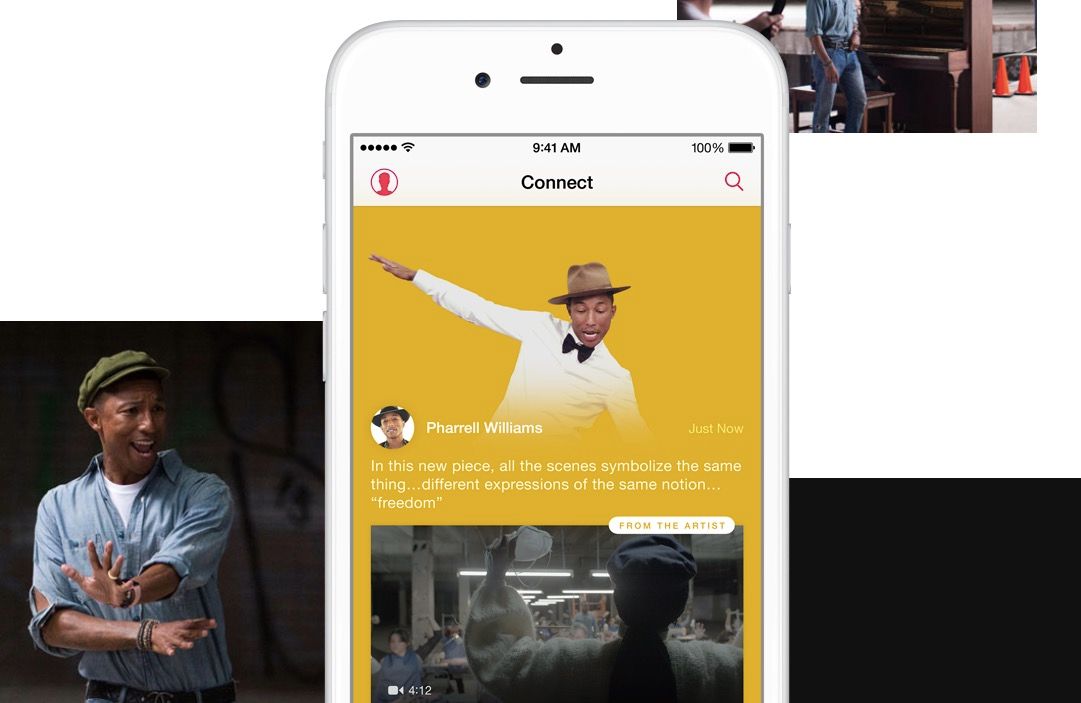The future - it seems - is not software algorithms but people.
Having successfully changed the way we bought and listened to music with the iPod, Apple is hoping to bring back those who have wandered off to services like Spotify and Deezer with a new app and service: Apple Music.
Pocket-lint was given early access to have a quick play with Apple Music ahead of its official launch via iOS 8.4 on 30 June. Sadly, we weren't able to take photos of the app in action.
Launching in the UK, US, and 98 other countries around the world, the app come streaming music service come radio station will focus on delivering an Anglo-American experience to millions of listeners around the globe 24/7.
Rather than just relying on computer software to help create playlists however, Apple is enlisting the help of DJs and music experts to curate the almost-infinite amount of choice available to music fans today.
The iPhone app we played with is beautifully simple, clean, but not clinical. Album art oozes through the interface, delivering a playful, colourful experience to your music wherever you are accessing it from, and that's the idea here.
It is not just local, as it used to be with iTunes; it is not just radio, as it used to be with iTunes Radio; and it is not just streaming, as it is with Spotify, Deezer, Rdio and others.
Setting up
To get the most out of it, you'll be encouraged to take some time to tell the app what kind of music you like, and in particular, specific artists.
Presented as floating circles jostling for attention, you can "like" or "love" a number of different genres. The more precise about how you love dance but only like pop, for example, will help filter out music that's not for you in the future. You can spend seconds or hours on this stage really drilling down into which types of music you do and don't like.
Get it wrong and you can reset it at any time - while the whole experience is dynamic going forward, so it learns the more you listen. You won't however be able to import your old spotify playlists.
For you
After you've informed the app of what music you like, it analyses your iTunes collection for tracks and how often you've played them. The app then gets to work recommending stuff it thinks you'll want to hear.
Presented in a number of ways, you get individual artists, new albums, recommend playlists, and more. It's like you've just walked into a record shop and the snooty store clerk isn't so snooty after all and just happy to help.
The mixture of different elements means it feel like there is plenty on offer. The iPhones we looked at offered various choices, with a good mix of different things to pull you in.
The playlists are all dynamic too, with themes surrounding everything from "Feeling blue" to "Running", and Apple will have a number of editors all specialising in different music areas (be that electronic or country music).
The playlists are editable. You can chop and change them around. Click the heart to say you like some tracks more, and then wait for them to change. The editors will constantly find new tracks to appeal.
The playlists are all curated by people, and that means they should all make sense. If you find you like a certain editor, you can even follow them within the Apple Music app to explore and discover even more music going forward. It also means that nothing is going to stay the same forever. Playlists will adapt and change with new music added and the potential for favourites to be dropped.
New
This area highlights new tracks being added to the service (whether that is new releases or expansion of the catalogue.) It's fairly standard stuff, but it does allow you to get to the new music quickly and efficiently.
Radio
This is the bit that really stands Apple out from the crowd of other music streaming services currently available.
Apple is effectively launching a radio station that will be hosted in Los Angeles, New York, and London. It'll broadcast 24/7.
Called Beats 1, it will be fronted and run by three main DJs: Zane Lowe in Los Angeles, Ebro Darden in New York, and Julie Adenuga in London.
There will be other names involved, as well as a variety of different shows, but the singular station will be available globally and will be live. If it's playing at 3pm in the afternoon in LA, you'll be listening at 11pm in the UK.
In a bold move to highlight the immediacy of "now", there will be no saving shows for listening to later. There are no podcasts to tune into. If Zane Lowe is in the studio at 8am on a Tuesday in Los Angeles, then that is when you will listen to it regardless of what timezone you happen to be in.
This immediacy will present a new way of thinking for many millennials, and it will be interesting to see how long Apple is able to keep this time-shifting banishment.
In Apple's keynote speech at WWDC, Lowe stated he loved the reaction he sometimes got when playing a song to an audience, and this will be the proof of the pudding.
As for the style of music, it will be varied - just as most music stations are - but always curated by DJs and with a predominant US/UK-vibe.
It won't be just non-stop music either. You can expect chatter, interviews, and other more "traditional" radio station elements all thrown into the mix (although there is unlikely to be hourly news reports). This isn't just a DJ pressing buttons without talking.
When it's not Zane Lowe or Julie Adenuga, it is access to iTunes Radio - previously on its own, but now found here.
The editor-curated stations are an extension of the curated playlists and will offer a compelling listen, rather than jumping between two tracks randomly because they happen to have the same beats per minute.
Connect
The third element is called Connect. Here, you can follow artists to get extra details or insights into their music and life.
Think of it like a dedicated music Twitter stream and you start to get an idea of how it will work.
That could be Pharrell sharing a behind the scenes video from a music video shoot, or it could be another artist sharing the lyrics to a song that's not out yet. The idea is that all artists on the Apple Music service can use this tool to promote themselves to fans who subscribe to Apple Music.
Artists are going to love the direct access to fans, while fans are sure to love the behind-the-scenes gossip within the app.
Whether it is fully used is yet to be seen. Apple's tried social around music before - Ping - and that didn't really catch on, but if the labels are savvy enough to offer compelling enough reasons to follow, it might just work.
My Music
My Music is exactly what it sounds like. Remember this replacing iTunes.
Subscribers automatically get access to iTunes Match, and you'll be able to save playlists for offline listening (just like you can in Spotify). Playback is 256kbps, which is the same as iTunes already, and there is no lossless support at present.
First impressions
There are still plenty of questions. Will the service be restricted to only Apple devices, will it work with services like Sonos, what will the final music selection be like and how much will it cost outside of the UK?
But regardless of those points for the time being, what Apple hasn't done is just create a "me too" product. Instead, it has taken all its current offerings, and bundled them into one experience, then added a layer of human gatekeepers on top of that to make sense of all the data.
You've got your library, which is where you've either bought or ripped your own music, and you've got iTunes Radio as well as iTunes Match, and then you've got an enhanced version of Genius with human intervention to try and make sense of it all.
This dynamic people-led interface layered on top of complicated computer algorithms has the potential to not only be really clever but also really interesting.
Apple's success lies in how good the editors are, how good those playlists are, and how well it can entice you into new tracks and artists without taking you out of your comfort zone too far.
With three months free trial to get you started, giving it a go will be a no brainer.




